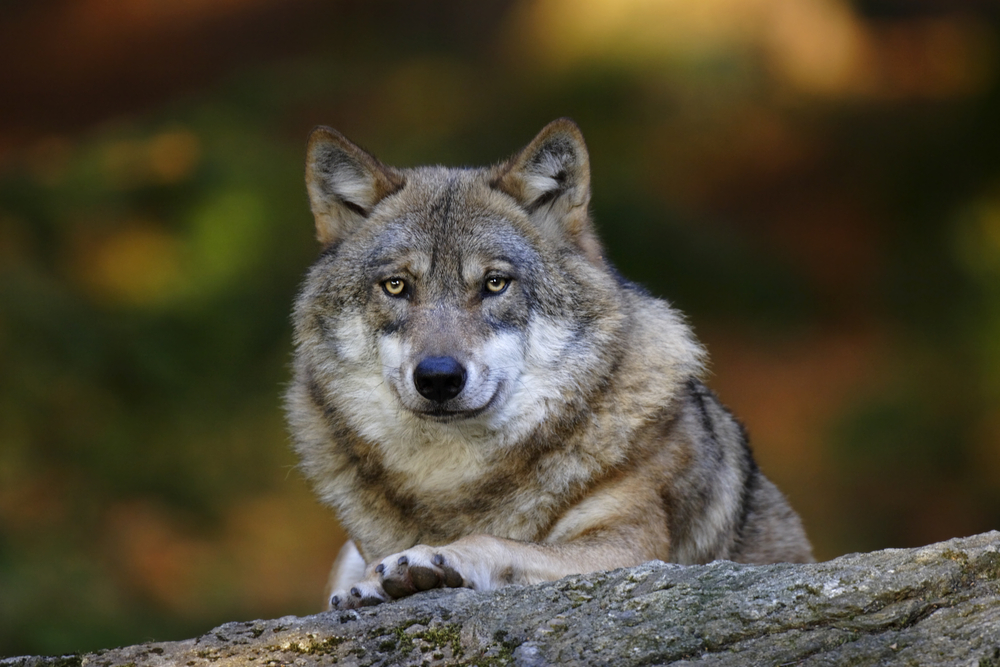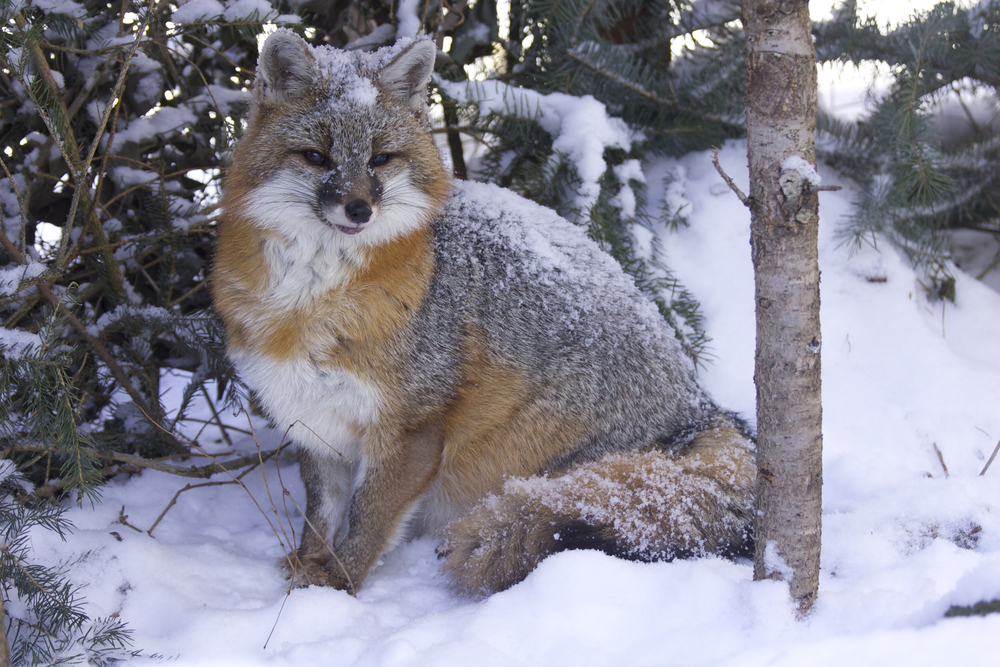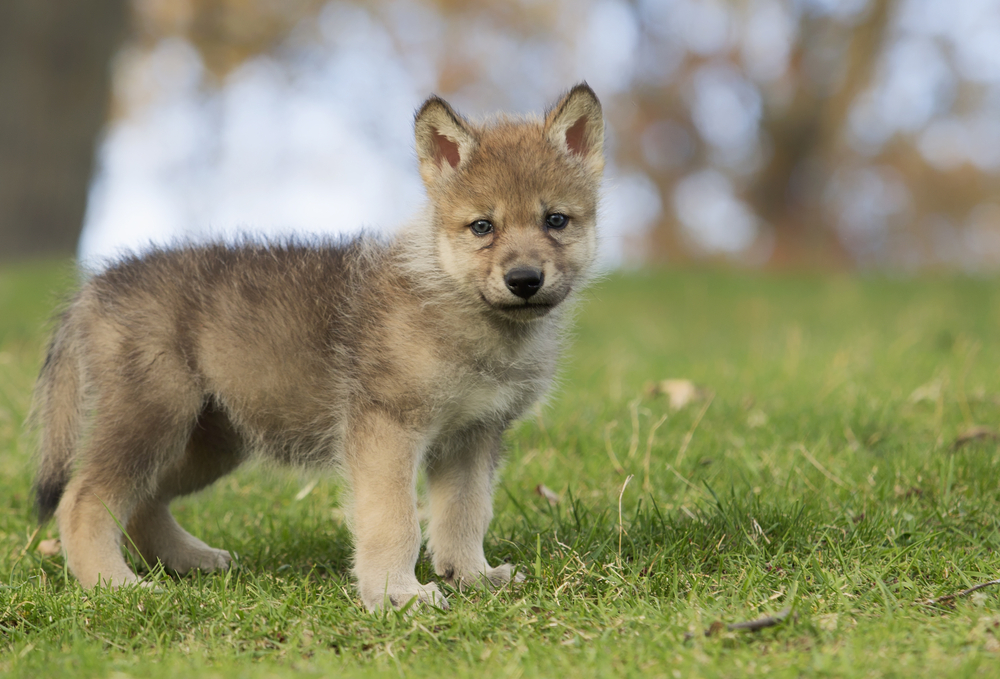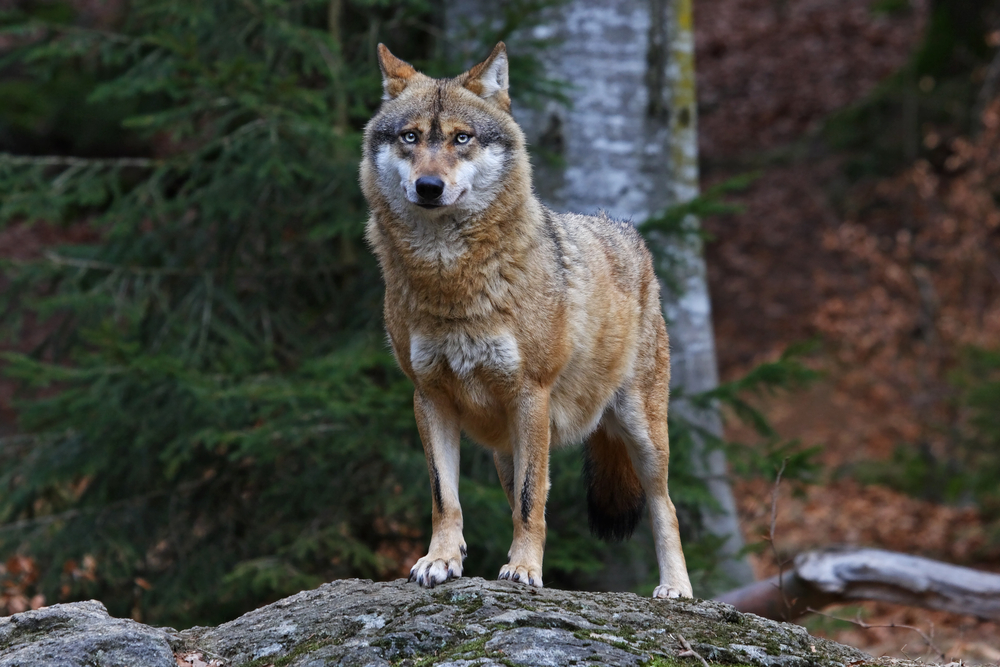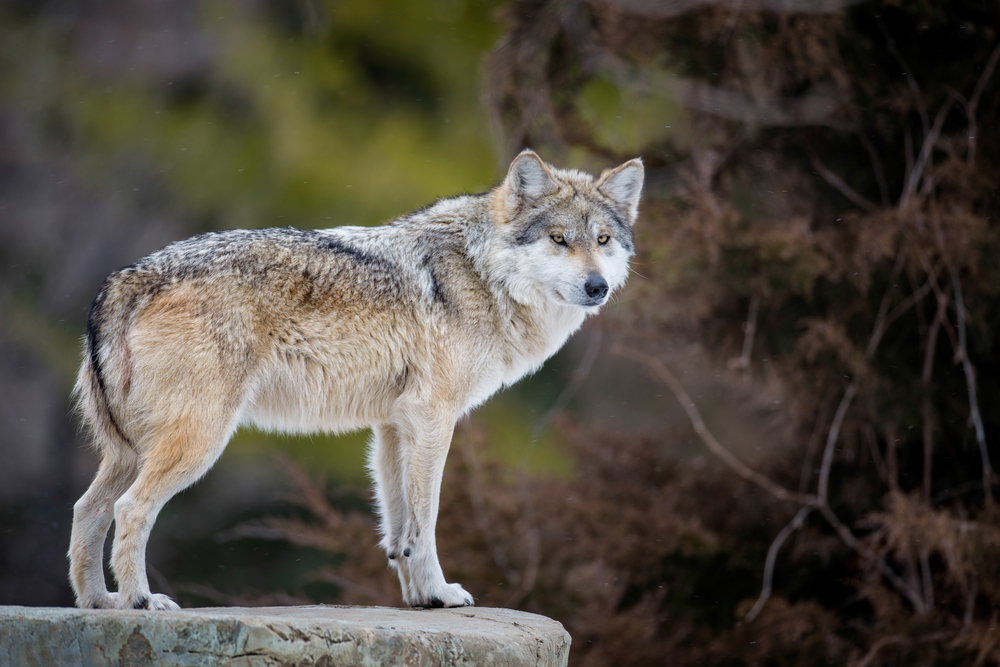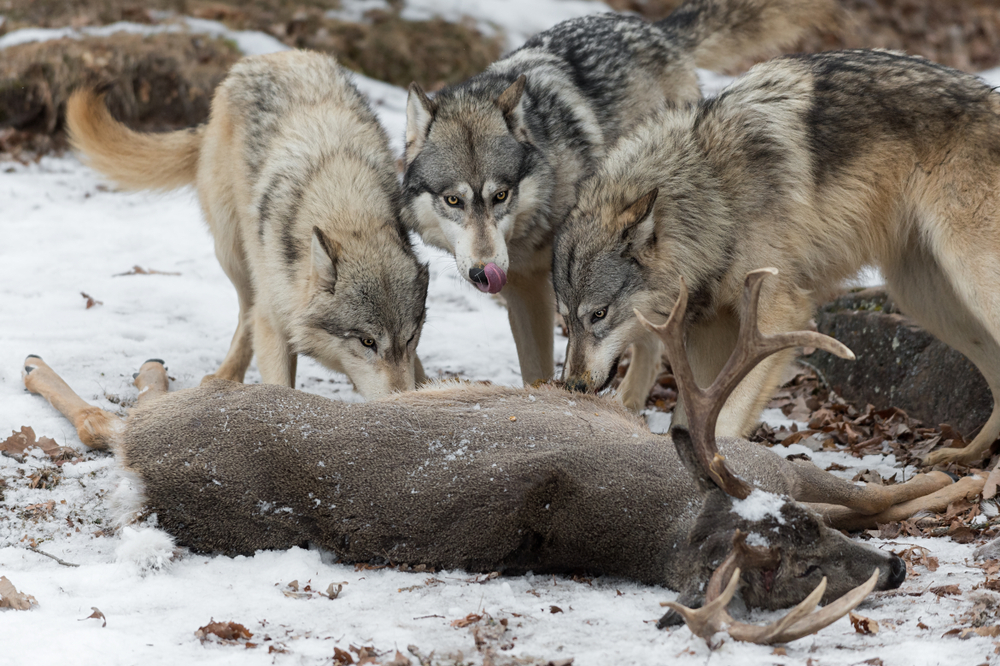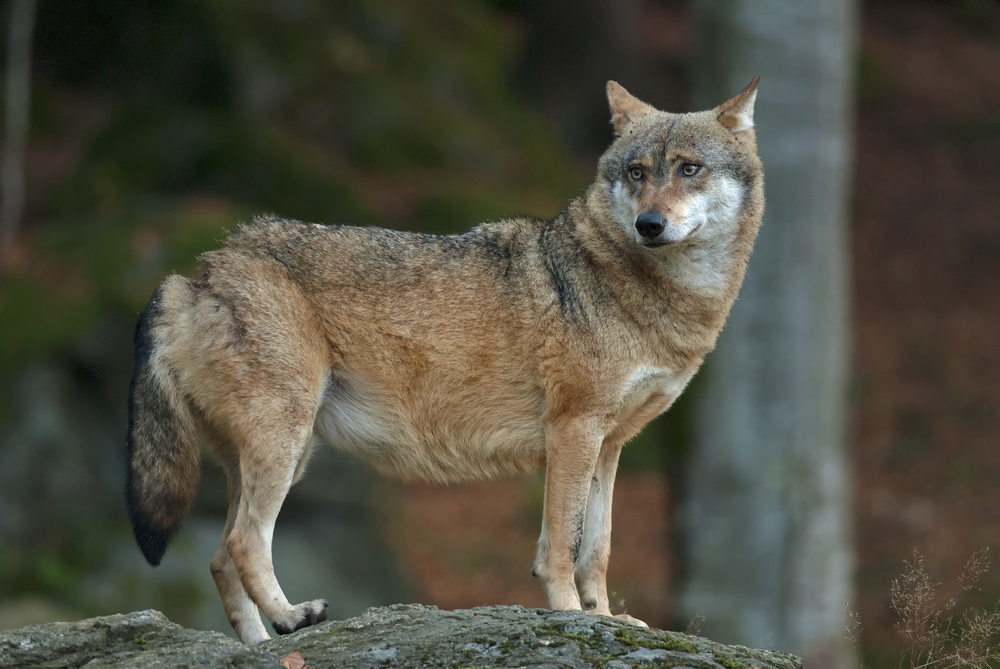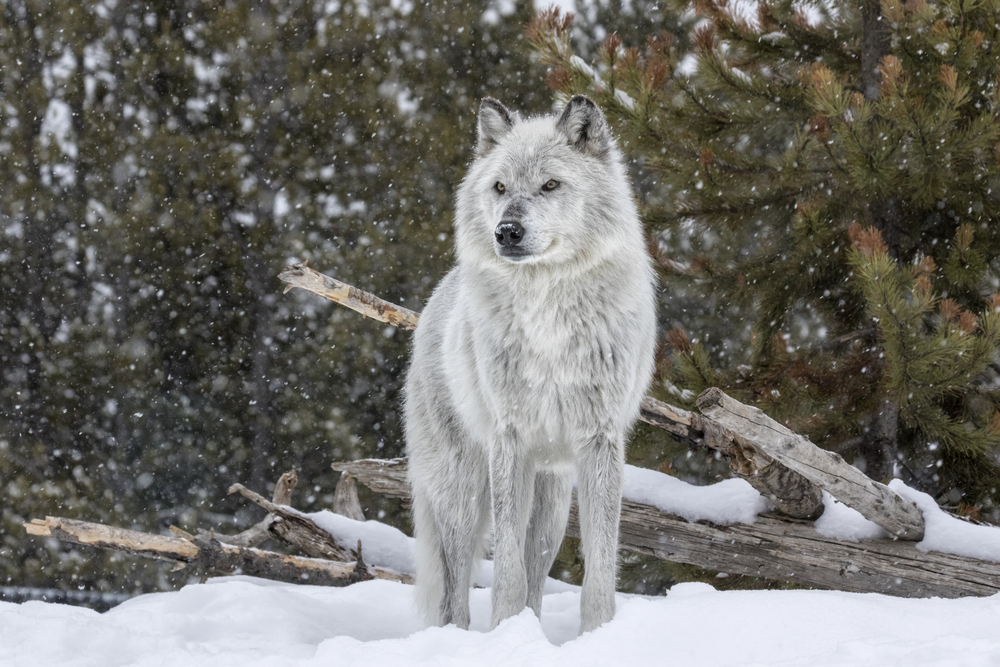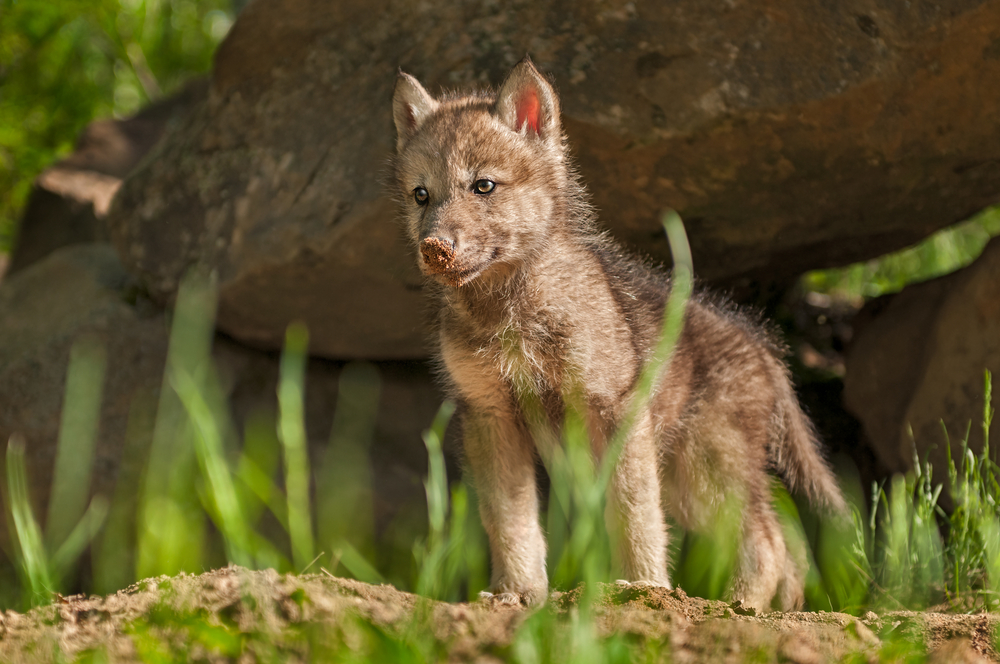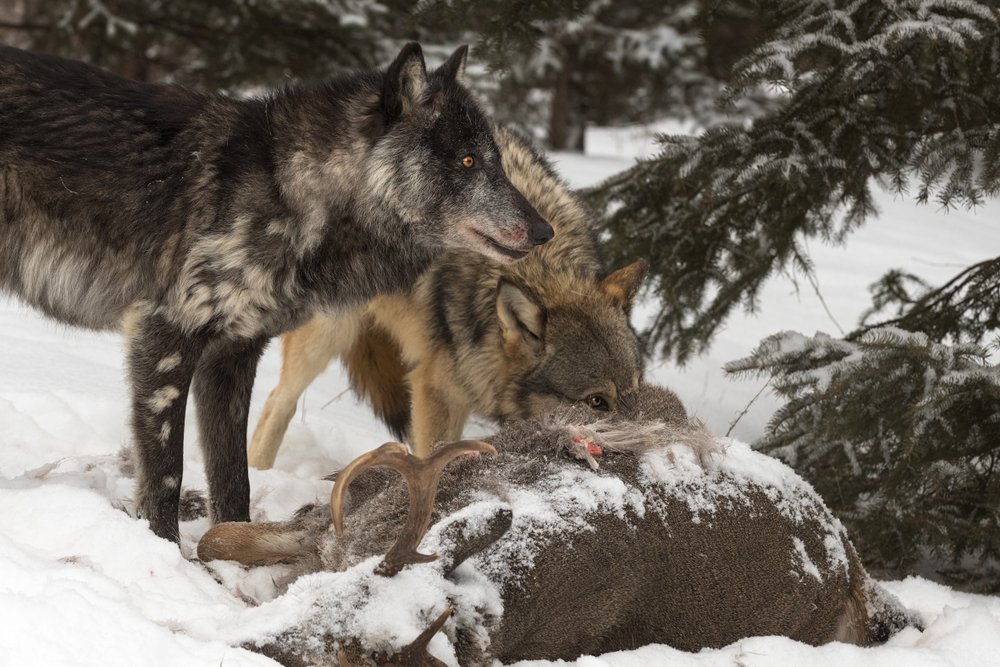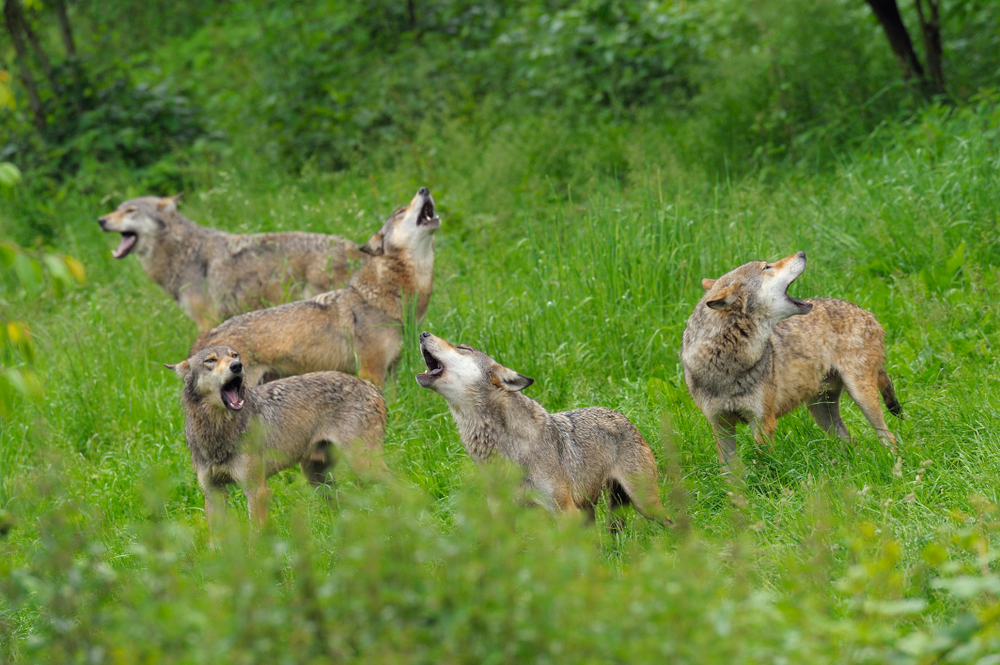Grey Wolves (Canis lupus) and domestic dogs (Canis lupus familiaris), while closely related and sharing a common ancestor, exhibit several distinct differences due to their separate evolutionary paths and the influence of domestication on dogs:
- Physical Characteristics: Grey Wolves are generally larger and more robust than most domestic dog breeds. They have longer legs, bigger paws, and a broader skull. Their fur color, typically in shades of gray, white, brown, or black, is more uniform compared to the vast range of colors and patterns found in dogs.
- Behavior and Temperament: Wolves are wild animals with strong survival and predatory instincts. They are generally more cautious and less trusting of humans than domestic dogs. Dogs, through generations of selective breeding and living alongside humans, have developed a wide range of temperaments and behaviors suited to cohabitation with people.
- Social Structure: Grey Wolves have a complex social structure and live in packs with a strict hierarchy. This social system is integral to their hunting, mating, and general survival strategies. Dogs, while also social animals, exhibit a diverse range of social behaviors influenced by their breeding and training.
- Communication: Both wolves and dogs communicate through vocalizations, body language, and scent marking, but the way they use these forms of communication can differ significantly. Wolves’ communication is adapted for life in the wild, with howling used for long-distance communication in their large territories.
- Reproductive Behavior: Wolves typically breed once a year, and pack leaders usually have exclusive breeding rights. In contrast, domestic dogs can breed multiple times a year and don’t have such strict mating hierarchies.
- Dependency and Independence: Wolves are independent survivors, hunting and fending for themselves in the wild. Domestic dogs depend significantly on humans for food, shelter, and care.
- Trainability and Intelligence: While both species are intelligent, dogs have been bred for trainability and to perform various tasks for humans, from herding livestock to providing companionship.
Understanding these differences is crucial for recognizing the inherent wild nature of wolves and the adaptations dogs have undergone through domestication and close association with humans.





































































